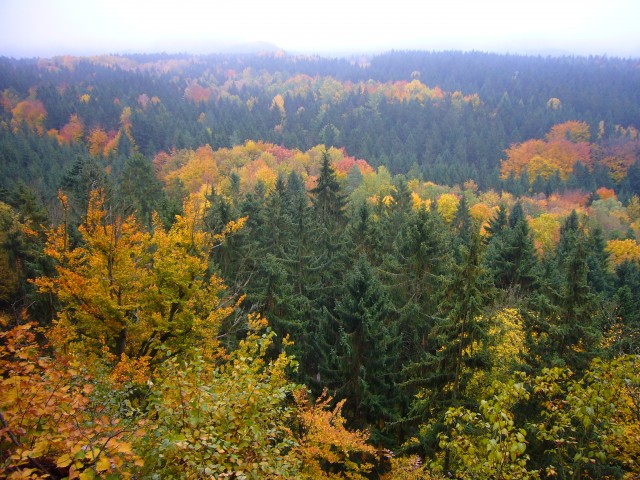Carbon load
Saturday 17 November 2012
Carbon cycle in a forest
I went for a hike the other day as the weather was wonderful. The path went through three different types of forests: monoculture spruce plantations, single wood beech and mixed species forest. The plantations are regularly clear cut and replanted. The single wood beech and the mixed forest are harvested but not clear cut.
As I hiked up the hills, many areas had a large number of fallen trees and this sparked my thinking.
How long does a tree take to decompose?
How much carbon is in a tree? In a forest?
These questions are relevant to the carbon cycle in topic 5.2 Greenhouse effect but also touch a number of other topics as well, such as Photosynthesis ( carbon fixation) , Chemistry of life ( condensation / hydrolysis), Ecology ( quadrat studies and decomposers).
I estimate that the leaves that a beech or any deciduous tree species produces would decompose within a few years under normal conditions in Bavaria as the leaf litter does not remain between autumns. Therefore the carbon in the leaves is relatively rapidly converted to humus and then slowly recycled back to carbon dioxide. The smallest twigs and branches would also take a few years too. But what about the tree trunks? Now this depends on their thickness of course. But tree trunks remain in the forest, at least those that are not harvested, for many years. The remains of ancient fallen trees can still be seen as the relief of the forest floor is not simply flat! How can one find out how long the carbon remains in the dead tree? According to ScienceNordic, trees can take over many hundreds of years to decompose and so slowly release their carbon back to the atmosphere. Maser et al "What We Know About Large Trees That Fall to the Forest Floor" have produced a large amount of research in this area.
I am intrigued to find out how one might find the answers to the questions. Could this be an extended essay topic? This is quite challenging but if a student really loves forests and lives near some forests or is interested in a forestry career, he or she might sink their teeth into the idea. The question is not ripe just yet for the essay and the student would need to refine and set limits but there are lots of opportunities here.


